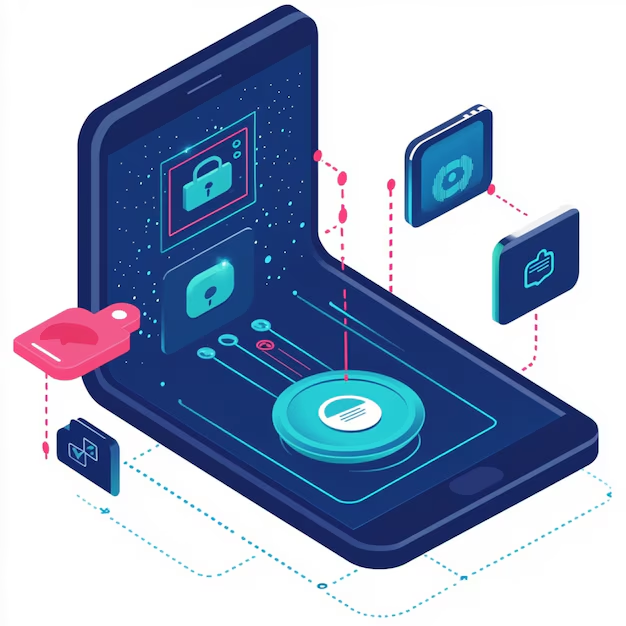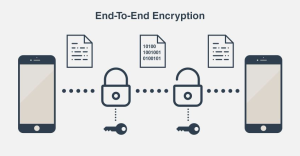Continuous Authentication in Mobile Apps uses behavioral biometrics, AI risk scoring, and passive authentication to deliver secure, seamless, real-time identity protection. Learn strategies, algorithms, UX models, and best practices to build trusted mobile experiences.

Continuous Authentication in Mobile Apps: 11 Powerful Strategies to Build Secure & Seamless User Trust
Introduction
Continuous Authentication in Mobile Apps is transforming modern security architecture. As threats evolve, passwords and one-time logins no longer protect user accounts. Attackers now use deepfakes, device cloning, session hijacking, and credential stuffing to bypass traditional authentication.
To stay ahead, mobile apps must operate with dynamic, always-on identity verification — silent, intelligent, and frictionless.
This guide explores how continuous authentication works, the AI behind it, behavioral biometrics, risk scoring, implementation patterns, and how businesses can deploy it at scale.
-
Introduction
-
What Is Continuous Authentication in Mobile Apps?
-
Why Continuous Authentication Matters
-
Behavioral Biometrics: Touch, Gesture & Typing Intelligence
-
Passive AI Signals & Sensor-Based Identity
-
Real-Time Risk-Adaptive Access Models
-
Machine Learning Models Behind Continuous Authentication
-
Ethical, Privacy-First Authentication Design
-
UX Design: Invisible Yet Secure
-
Industry Use Cases
-
Implementation Challenges
-
Future of Continuous Authentication
-
Conclusion
-
External Resources
-
Internal Links
In the modern mobile-first ecosystem, passwords and one-time authentication events are no longer sufficient. Users expect frictionless access; regulators demand higher security; and attackers continuously evolve their methods. As mobile threats become more sophisticated — deepfake fraud, session hijacking, credential stuffing, and device cloning — static authentication models collapse under pressure.
This reality has driven a shift from one-time login checkpoints to continuous, intelligent, adaptive authentication systems powered by:
- Behavioral biometrics
- Passive user signals
- Sensor-rich device telemetry
- AI-driven risk engines
- Context-aware trust scores
This new paradigm — Continuous Authentication — evaluates identity throughout the session lifecycle, not just at sign-in. It allows mobile applications to verify legitimacy continuously without interrupting user experience, enhancing security while preserving convenience.
From Login Event to Living Identity: What Continuous Authentication Really Means
Traditional authentication operates like a gate:
Verify once
Let the user in
Trust them forever
Continuous authentication transforms the model into a dynamic trust lifecycle, where the user’s legitimacy is constantly recalculated using:
| Attribute | Purpose |
| Touch dynamics | How the screen is tapped, swiped, scrolled |
| Typing signatures | Pressure, timing, cadence, keystroke rhythm |
| Micro-gestures | Finger orientation, subtle movement angles |
| Sensor telemetry | Gyroscope, accelerometer, proximity, motion graph |
| Environmental context | Network, location patterns, Bluetooth signals |
| Device integrity | OS integrity, device fingerprint, SIM binding |
| Risk signals | Suspicious session behavior, anomalies, device changes |
Instead of one static identity proof, continuous authentication relies on a behavioral identity footprint — organic, nearly impossible to spoof, and smooth for the user.
Touch Dynamics & Micro-Gesture Patterns: Identity Hidden in Every Swipe
Our hands reveal identity like a digital signature.
Touch Biometrics Captured in Real Time
- Touch pressure and surface area
- Drag velocity and trajectory smoothness
- Finger orientation and tilt
- Scroll momentum and touch lift timing
No two humans interact with their phones identically — and users can’t consciously replicate these tiny behavioral rhythms.
Micro-Gesture Intelligence
Micro-gestures are subconscious:
- Thumb anchor point
- Wrist orientation
- Angle of micro-flicks
- Repetitive movement habits
These patterns allow systems to differentiate:
- The real owner
- A close friend/family member
- A fraudster attempting imitation
- A bot simulating interaction
While facial recognition can be fooled with masks or deepfakes, micro-movement biometrics resist spoofing.
Typing Signatures: Keystrokes as Biometric Proof

Typing patterns create another layer of behavioral identity:
| Signal | What It Means |
| Key press duration | Finger agility timing |
| Inter-key interval | Rhythm and timing cadence |
| Typing drift | Accuracy deviation under distraction |
| Autocorrect reliance | ML patterns in text input behavior |
| Swipe texting behavior | Flow patterns, correction style |
AI models can build a typing behavioral profile that adapts gradually, not rigidly, to user evolution — ensuring users are recognized even when tired, stressed, or typing differently.
Device Sensor Telemetry & Secure AI Inference
Smartphones are sensor-dense authentication devices in disguise.
Telemetry Channels Feeding Trust Models
- Accelerometer (movement patterns)
- Gyroscope (device handling style)
- Proximity sensor (how the phone is held)
- Ambient light patterns (usage environment)
- Screen unlock posture
- Bluetooth & Wi-Fi interaction signatures
A risk engine can detect anomalies such as:
- Sudden unnatural movement patterns
- Device orientation inconsistent with user behavior
- Sessions starting from unfamiliar angles (possible remote control)
- Unusual environmental signals (SIM swap, Wi-Fi MITM)
Secure Inference at the Edge
Modern privacy-first architectures use:
- On-device ML inference
- Secure enclave processing
- Federated learning
- Differential privacy noise injection
- Encrypted behavioral templates
This ensures behavioral data remains protected, with minimal risk of biometric leakage.
Real-Time Risk-Adaptive Access Control
Continuous authentication isn’t only verification — it is a real-time security reaction.
Dynamic Risk Adjustment
If risk rises mid-session:
- App triggers re-authentication
- Sensitive features lock temporarily
- Step-up security prompts (Face ID, OTP, FIDO key)
- Transaction velocity throttling
- Session termination if high-risk confirmed
Examples:
| Scenario | Risk Signal | Action |
| User behavior remains normal | Behavioral profile matches | Silent authentication continues |
| Sudden foreign location + new typing rhythm | Moderate anomaly | Ask for Face ID |
| Remote access detected + unfamiliar touch gestures | High risk | Session freeze + re-verification |
It’s friction-only-when-risk-justifies — elegant, intelligent, user-first security.
The AI Behind Behavioral Authentication
Behavioral authentication models leverage:
- Deep Learning Movement Models
- RNN/LSTM gesture sequence prediction
- Hidden Markov models for motion signatures
- Anomaly scoring and trust graphs
- Federated user identity modeling
Key output metric: Confidence Probability Score (CPS)
This score determines whether access continues quietly or a verification challenge is triggered.
Over time, the system becomes more precise, minimizing:
- False rejects (user frustration)
- False accepts (fraud success)
When AI Authentication Is Ethical vs. Intrusive
With great data comes great responsibility.
Ethical Continuous Authentication
Uses privacy-preserving principles:
| Ethical Practice | Description |
| On-device biometric processing | Raw data never leaves device |
| User permission & transparency | Clear, informed privacy consent |
| Data minimization | Only behavior graphs, no raw patterns stored |
| No covert monitoring | Visible policy, no secret surveillance |
| Regulatory compliance | GDPR, CPRA, biometric privacy acts |
Intrusive Practices (Forbidden)
- Storing raw touch/typing patterns in cloud
- Behavioral tracking without disclosure
- Using behavioral data for marketing
- Cross-app identity profiling
- Selling behavioral AI logs
Continuous authentication must protect users — not analyze their lives.
Enhancing Trust Without Violating Privacy
Trust is not only technical; it is emotional. Users trust secure systems that also respect boundaries.
Design Principles That Build Trust
- Zero-knowledge biometric architecture
- Privacy-by-design ML pipelines
- Edge computing for behavior inference
- User control over data retention
- Anonymous behavioral profiling (no identity tie)
- Clear privacy statements and dashboards
When users understand why security exists and how it protects them, trust strengthens.
User Experience: Invisible, Not Invasive
Traditional authentication friction frustrates users:
- “Enter password again”
- “Session expired — log in again”
- “Verify identity to continue”
Continuous authentication makes this friction disappear.
Invisible UX Model
- No prompts unless risk detected
- Instant fallback to biometrics when needed
- Smooth re-authentication for critical actions
- Human-centric privacy messaging
Result: Secure yet frictionless digital experience.
Industry Applications
| Sector | Use Case |
| Mobile Banking | Real-time fraud defense, silent session validation |
| Fintech Wallets | Adaptive risk payments & investment protection |
| Healthcare Apps | Patient privacy & clinical data access control |
| Enterprise Mobility (MDM) | Employee identity and zero-trust work mobility |
| E-commerce Apps | Bot prevention, account takeover defense |
| Messaging & Secure Comms | Prevent device spoofing & identity misuse |
Continuous authentication is rapidly becoming a regulatory and enterprise expectation, not optional innovation.
Challenges and Implementation Considerations

| Challenge | Impact |
| False positives in behavioral drift | Must balance security & UX |
| Device variance | Models must adapt across hardware |
| Accessibility differences | Avoid bias against disabled users |
| Privacy laws | Strong governance frameworks mandatory |
| Edge compute constraints | Optimize ML footprint |
Correct solution: Hybrid privacy + edge vs. cloud split + federated learning
Future Outlook: Identity Becomes Continuous, Not Momentary
The authentication paradigm of the next decade:
- Passwordless by default
- Behavior + biometrics + risk signals
- Secure edge AI inference
- Transparent data governance
- User-centric trust model
Soon, logging into apps will feel as natural as using a phone normally — because using the phone normally is the login.
Conclusion: The New Identity Standard Is Fluid, Adaptive, and Human
Continuous authentication represents the future of digital trust:
- No static passwords
- No inconvenient checkpoints
- No intrusive surveillance
Instead, identity becomes an ongoing confidence graph, respecting the user while defending them.
Security and experience no longer compete — they collaborate.
Organizations that adopt behavioral AI + privacy-first design will lead the next wave of secure mobile innovation.
The era of one-time authentication is ending.
Identity is now continuous. Authentication is now alive.Continuous Authentication in Mobile Apps


